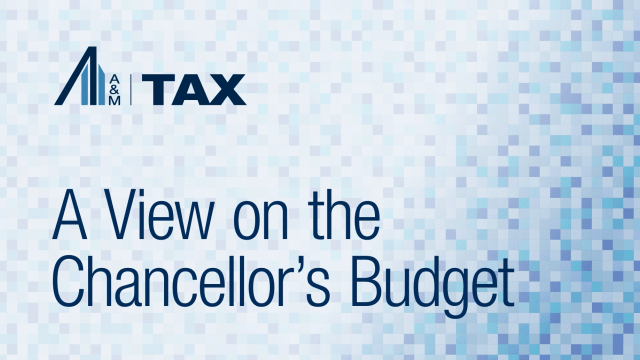Senate Republicans Release Initial Text for Phase 3 COVID-19 Bill
One day after the President signed the Families First Coronavirus Response Act (HR 6201) in law, the Senate Republicans released their initial bill text for the Phase 3 COVID-19 Bill. The bill text, which is 247 pages, covers a wide range of areas, including changes to the Internal Revenue Code. This alert highlights some of the proposed tax law changes, which are intended to increase liquidity, as well as technical corrections to the Tax Cuts and Jobs Act (TCJA).
Due Date Extensions
After the President declared a national emergency on March 13, 2020, the IRS released Notice 2020-17 on March 18, which extended the deadline for the payment of federal income tax payments and federal estimated income tax payments that are due on April 15, 2020 to July 15, 2020. The extension relief was limited to $10,000,000 for C corporations (or for a consolidated group) and $1,000,000 for all other taxpayers regardless of filing status. The Notice, however, did not extend the due dates for filing the returns.
The bill text, however, proposes to extend the relief afforded under Notice 2020-17 by extending:
- The filing and payment deadline for 2019 income tax returns to July 15, 2020.
- The due date for individual and corporate estimated tax payments for 2020 to October 15, 2020.
- The due date for the payment of payroll taxes through December 31, 2020 is generally extended and is payable 50% on December 31, 2021 and 50% on December 31, 2022.
NOL Carrybacks and Excess Business Losses
The bill modifies the rules governing net operating losses (NOLs) for taxable years beginning before January 1, 2021 by:
- Generally allowing for the carryback of the NOLs for 5 taxable years* and
- Removing the 80% taxable income limitation on the deduction of NOLs that was added as part of TCJA.
* It is worth noting that there is a drafting glitch as it appears that the carryback provision is supposed to apply to 2018, 2019, and 2020 taxable years. However, as drafted, the provision only applies to 2018 and 2019 taxable years.
The bill also relaxes the rules governing excess business losses of noncorporate taxpayers for taxable years beginning after December 31, 2017 but before December 31, 2020 so that pass-through entities and sole proprietors can also benefit from the NOL carryback change.
AMT Refundable Credit
As part of TCJA, the corporate AMT was repealed but the portion of the minimum tax credit that was refundable was spread over four years ending in 2021. The bill modifies the timing of the refundable credit and makes it all refundable in 2018. Therefore, to claim this refund, an amended 2018 tax return will need to be filed.
Modifications to Limitation on Interest Expense Deduction
As part of TCJA, Congress limited a taxpayer’s ability to deduct business interest expense to the sum of: (1) the taxpayer’s business interest income, (2) 30% of the taxpayer’s adjusted taxable income (i.e., taxable income computed with certain adjustments) and (3) floor plan financing interest. The bill proposed to modify this rule by providing:
- For taxable years beginning in 2019 or 2020, taxpayers can calculate the amount of interest it can deduct based on 50% of its adjusted taxable income (instead of 30%) and
- For taxable years beginning in 2020, taxpayers can generally elect to use its 2019 adjusted taxable income to calculate its interest deduction limit.
It is important to remember that we are still eagerly anticipating final and proposed general guidance on the limitation of the interest expense deduction. The final regulations cleared the Office of Information and Regulatory Affairs (OIRA), but the proposed regulations (which were sent on February 7) are still under review. The government has said that they will publish both the final and the proposed regulations at the same time.
Individuals are entitled to a refundable credit
The administration, working with Andrew Yang, former Democratic presidential candidate, adopted the universal basic income approach as an effort to infuse liquidity into the markets. Instead of monthly payments, the bill text provides for a one-time refundable credit based on an individual’s 2020 tax return, so long as the taxpayer has a social security number. In order to infuse liquidity immediately, individuals would be allowed to file a claim for refund based on their 2018 tax return (or 2019 tax return if they did not file a 2018 tax return). The amount of the credit is generally $2,400 if the taxpayer’s filing status is married filing joint (MFJ) or $1,200 for all others and increased by $500 per qualified child so long as the taxpayer meets an income threshold. The credit begins to phase out if the taxpayer’s 2020 adjusted gross income (AGI) exceeds $150,000 if the taxpayer’s filing status is married filing joint (MFJ) or $75,000 for all others, with a complete phase out if the AGI exceeds $198,000 if the tax return’s filing status is MFJ or $99,000 for all others.
TCJA Technical Corrections
The bill text also includes numerous technical corrections to TCJA.
NOL Deduction
mentioned above, TCJA limited the deduction of NOLs to 80% of the taxpayer’s taxable income. However, a question remained whether the 80% limitation took into account the deduction for pre-TCJA NOLs or not. The bill addresses this question by providing that Pre-TCJA NOLS are not subject to the 80% limit, but they reduce taxable income for purposes of determining the 80% limit. This approach can be illustrated by the following example.
Example: Assume X has taxable income of $100, a pre-TCJA NOL of $60, and a post-TCJA NOLs of $50. Under the bill’s approach, X’s limit for deducting post-TCJA NOLs is $32 (($100 taxable income - $60 Pre-TCJA NOLs) * 80%). Therefore, X has taxable income of $8 ($100 pre-NOL deduction taxable income - $60 Pre-TCJA NOLs - $32 Post-TCJA NOLs). X will have a Post-TCJA NOL carryforward of $8.
The bill also provides that for purposes of calculating the 80% limit, taxable income is calculated without regard to the net operating deduction, the deduction for qualified business income under section 199A, and the deduction for foreign-derived intangible income (FDII) and global intangible low-taxed income (GILTI) under section 250.
It is interesting that Congress felt the need to address these technical issues, as Treasury and the IRS have a regulation package to address various components of the net operating loss deduction (in which these issues may have been addressed), which has cleared OIRA review on March 11, but has yet to be released.
Lastly, the bill corrects an effective date issue so that the TCJA provisions related to NOLs apply to tax years that beginning after December 31, 2017, as opposed to tax years that end after December 31, 2017.
Retail Glitch Correction
As part of TCJA, the ability to depreciate an improvement to an interior portion of a building which is nonresidential real property which was made after building was first placed in service (i.e., qualified improvement property or QIPs) was modified so that its useful life was 40 years and therefore ineligible for the additional first year depreciation deduction (section 168(k)). The bill corrects this and changes its useful life to 15 years and therefore eligible for the section 168(k) deduction.
Downward Attribution in Determining CFC Status
As discussed in a prior A&M Taxand insight, as a result of TCJA, downward attribution applies for purposes of determining whether a foreign corporation is a controlled foreign corporation and whether a United States person is treated as a United States shareholder. The impact of this rule can be illustrated by the following example.
Example: Assume a foreign corporation owned 100% of the stock of both a US subsidiary and 99% of a foreign subsidiary, with the US subsidiary owning the remaining 1% of the foreign subsidiary. Due to the application of the downward attribution rules, the US subsidiary would be a United States Shareholder and the foreign subsidiary would be a controlled foreign corporation. Therefore, there would be various US filing obligations as a result of constructive ownership, but the US subsidiary would only have income inclusions for its 1% direct interest as a result of Subpart F income or GILTI.
The bill proposes a general rule that eliminates downward attribution, with an exception that retains it for those scenarios in which a US person would own more than 50% of the vote or the value of a foreign corporation as a result of downward attribution. If the downward attribution rules apply, then the US person is a foreign controlled United States Shareholder and the foreign corporation is treated as a foreign controlled foreign corporation.
However, applying this to the example above (or to the typical holding structure for private equity clients where foreign corporation owns 100% of both the US subsidiary and foreign subsidiary), the US subsidiary would be a foreign controlled United States Shareholder and the foreign subsidiary would be a foreign controlled foreign corporation. As a result, it appears that the same reporting obligations would still apply. Additionally, the US subsidiary would have a Subpart F and GILTI inclusion due to its 1% directly owned interest. The bill’s proposed elimination of downward attribution only impacts scenarios when the United States person would have a minority (less than 50%) interest in the foreign corporation if downward attribution applied.
Alvarez and Marsal Taxand Says:
The highlights listed above cover just a few of the items within the Senate Republicans initial bill. If these provisions are included in the final bill that is signed into law, taxpayers will have an opportunity to increase their liquidity by filing amended returns for previously paid taxes. However, some taxpayers may not be able to take full advantage of the proposed rules. For example, portfolio companies may be contractually prohibited from filing amended tax returns for taxable years prior to their acquisition, thereby prohibiting them to benefit from some of these provisions. Stay tuned for future insights with regards to Congress’ tax measures as it seeks to infuse liquidity into the markets.






